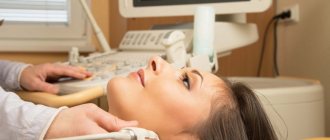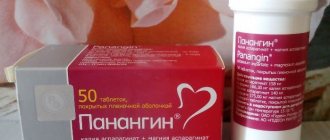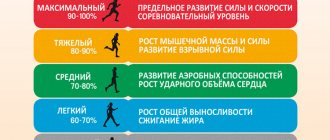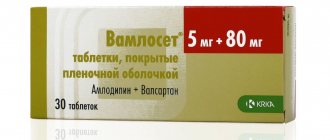The ear is an organ of hearing that performs very important functions in the human body. It provides the perception of sounds and their conduction, as well as orientation in space. Ripple or noise in the ear are symptoms of pathological changes in the auditory analyzer, the causes of which must be urgently determined in order to begin treatment in a timely manner. When there is a constant pulsation in the ear, a person becomes irritated and nervous, sleeps and eats poorly, and becomes depressed. These signs ultimately lead to even greater health problems: hearing impairment, mental disorders.
It can pulsate in both ears simultaneously or separately in each. The pulsation in the ear can be ringing, reminiscent of clicking, or dull, almost imperceptible. It is often accompanied by a feeling of congestion. In healthy people, the cause of painless pulsation in the ears, which occurs periodically, is stressful and conflict situations, physical and psycho-emotional stress, fluctuations in pressure and body temperature. In such cases, pulsating tinnitus is not a pathology and does not require special treatment. If it is heard constantly and is accompanied by pain, incoordination of movements, and the appearance of “spots before the eyes,” you should immediately visit a doctor. Such pulsation is a manifestation of a disease, the cause of which must be determined and eliminated.
Causes
Among the most common causes of pulsation in the ears are:
- Osteochondrosis. The development of pulsation in the ear caused by osteochondrosis is a common problem. The risk group facing osteochondrosis includes patients over 20 years of age. Depending on individual characteristics, diet and physical activity, the problem may appear at an early age. The problem most often affects people over 40 years of age. The pulsation caused by osteochondrosis is due to the fact that degeneration processes begin that affect the spinal column and its constituent elements. As tissues are destroyed, the process of blood circulation and innervation of organs, in particular the brain, deteriorates. Circulatory insufficiency forms atrophic processes, including in the ear. Pinched nerve fibers lead to severe innervation disorders. The pulsation develops acutely and can occur with periods of exacerbation and remission. The patient notes severe pain in the head and cervical spine. Turning to the sides causes discomfort. Because of such symptoms, a person needs to take a forced position, this helps relieve pain.
- Pressure. The inner and middle ears are sensitive to pressure changes, therefore, any changes in their parameters are accompanied by unpleasant symptoms. Patients suffering from arterial hypertension and problems with blood pressure changes encounter a similar clinic. With stable arterial hypertension, noise in the ear bothers the patient regularly, as well as pulsation. If the process is long-term, medications are ineffective during its course, and the pulsation intensity gradually decreases. This is caused by the development of addiction or adaptation to the current state. With unstable blood pressure numbers and the development of a hypertensive crisis, a sharp appearance of pulsation is possible, which is accompanied by severe headache, blurred vision, spots before the eyes and loss of consciousness with pain in the chest area. The patient may associate the development of such manifestations with heavy lifting, physical activity, or a stressful situation. The mechanism for the development of such manifestations is associated with an increase in the pressure of the vascular wall, irritation of the nerve endings in the prescription apparatus, and an increase in the sensitivity of the cells of the middle and inner ear.
- Atherosclerosis. Atherosclerosis of cerebral vessels is caused by changes in the composition of the vascular wall. People of both sexes face a similar problem. The predominant age of onset of the disease is 45-55 years. This is due to the fact that cholesterol accumulates in the body, which is localized mainly on the arterial wall. In some cases, the deposition process is diffuse in nature, which is accompanied by a general loss of elasticity. But the most dangerous option is the formation of cholesterol plaques. It can block the lumen of the vessel, disrupting blood flow. As a result of both processes, there is a decrease in blood flow to the head, parts of the brain, ears, etc. Atherosclerosis is characterized by the fact that pulsation may not be associated with the rhythm of heart contractions. A person notes an increase in symptoms in response to the touch of the head to the pillow. In addition, arterial hypertension, memory impairment, and dementia in older people develop. Atherosclerosis is not accompanied by pain symptoms. Manifestations are not pronounced and develop over a long period of time. At a later age, this may result in the development of deafness due to atrophic processes. Atherosclerosis occurs as a result of several reasons, among them the most common are: The intake of fatty acids of plant and animal origin causes excess cholesterol production.
- Its formation in an endogenous manner arises due to the individual characteristics of a person.
- The most common inflammatory process that causes pulsation is otitis media. It can be of both internal and external nature. The development of pulsation is usually associated with an increase in the inflammatory process, swelling of the mucous membranes and increased blood circulation. If otitis media becomes purulent, then the pulsation is caused by the formation of a cavity filled with purulent contents. In humans, otitis media, regardless of age, in addition to pulsation, is accompanied by headache, which has an increasing character, intoxication, fever, hearing impairment, up to its complete loss. The process requires immediate treatment, since there is a high probability of complications with melting of surrounding tissues.
- The first option is the most common, as it occurs as a result of violation of the rules for safe handling of personal hygiene items. Mostly children encounter it when they try to clean their ears on their own, but there are also cases in the adult population. The cause of pulsation is damage to the eardrum. Either a complete rupture or a partial violation of integrity can form. In addition to pulsation, the victim notices the development of bloody discharge from the ear cavity, severe pain and hearing loss.
- disturbance of general well-being,
If your ear feels stuffy and feels like it’s pulsating inside
If your ear periodically becomes blocked and at this moment it seems to be pulsating inside, then it is worth checking your blood pressure readings - this combination of symptoms is characteristic of hypertension. This diagnosis is made if a person constantly has readings of 140/90 mm Hg. Art. and higher, then we are talking about pathology, but a temporary increase may indicate overwork or a psycho-emotional breakdown. The development of hypertension is provoked by:
- the person is over 60 years old;
- overweight;
- smoking and frequent consumption of alcoholic beverages;
- constant use of hormonal drugs;
- poor nutrition, “hobby” with spicy, fatty, smoked and any high-calorie foods;
- sedentary lifestyle.
If several provoking factors are present in a person’s life, then the risk of developing hypertension increases significantly. Sustained high blood pressure is also manifested by other symptoms - flashing “spots” before the eyes, rapid heartbeat, dizziness.
The problem can be solved by adjusting your lifestyle:
- quit smoking and alcohol or radically reduce their amount;
- normalize your diet;
- lead an active lifestyle, at least start doing simple exercises from the exercise complex every day;
- sleep at least 7-8 hours a day;
- get rid of excess weight.
If this behavior does not give positive dynamics, then the doctor prescribes specific medications that maintain blood pressure levels within normal limits.
Throbbing pain in the ear as a symptom of inflammation
The most obvious symptom of inflammatory ENT diseases is throbbing pain in the ear. Otitis (inflammation of the middle ear) is diagnosed not only by throbbing pain, but also by other characteristic symptoms:
- increase in general body temperature;
- decreased hearing acuity, feeling of congestion;
- dizziness.
Another disease of inflammatory origin is labyrinthitis (pathology of the inner ear). The disease leads to a stop in the functionality of sound-conducting receptors, so additional symptoms will be severe hearing loss, as well as increased sweating even in a cool room, dizziness, and pale skin.
Ear drum knocking due to injury
Any traumatic brain injury requires a CT scan because its consequences are literally unpredictable and the feeling of a pounding eardrum is one of the many symptoms of serious disorders. Additionally, the patient complains of severe dizziness, nausea and vomiting, and severe headache.
The problem with the hearing organs is associated with dysfunction of auditory cells, impaired sound perception and sound conduction. All symptoms, including pulsation in the ears, sharply intensify at the moment when the injured person begins to move his head or change his sitting/lying/standing position.
But even after undergoing therapy, the traumatic brain injury bothers me for a long time (although doctors discharge the patient with the wording “healthy”) - pulsation in the ears, but painless, and dizziness, but without loss of consciousness, periodically bother me.
Blood pulsates if there is a tumor of the brain or hearing organs
The presence of growing tumors of the brain and hearing organs can also provoke the symptom in question - “pounding” in the ears occurs because the blood is pulsating in the “squeezed” vessels. A pulsating sensation is often the primary symptom of a growing tumor, because even if it is small in size, it puts pressure on the blood vessels, narrowing them, and as blood passes through these problem areas, a characteristic knocking sound occurs.
Blood can pulsate in one ear (this allows you to determine the location of the tumor) or simultaneously in both. A constant “pounding” in the ears should alert you if, in parallel with this, there is a sharp loss of weight without changing your diet, or loss of strength.
Aneurysm as a cause of the sensation of heart rate pulse
If the pulse in the ears exactly follows the rhythm of the heartbeat, then it is worth checking the condition of the blood vessels - this combination of symptoms is typical for small aneurysms. The pathology is characterized by protrusion of the vessel wall, which leads to disruption of blood flow, and at the moment the blood passes through such narrowed areas, pulsation occurs.
An aneurysm is also characterized by other symptoms: deterioration in general health, shortness of breath, psycho-emotional disturbances, and severe headaches.
Diagnostics
In order to determine the possible cause of the development of pulsation in the ears, you need to seek help from a specialist:
- Initially, the otolaryngologist begins to figure out the problem of pulsation in the ear, who clarifies the nature of the complaints, the time of their appearance and the conditions against which they arose. It is important for the specialist to know the patient’s history, his early neurological status and the condition of the hearing organ. This will allow you to assess the speed of development of the disease and the severity of the process. Family history is also clarified. This is especially important if close relatives at an early age experienced strokes caused by thrombosis or rupture of cerebral vessels, hereditary variants of cholesterol metabolism or tumor processes.
- The patient is examined. With such clinical manifestations, it is important to assess not only the condition of the hearing organ, determining the patency of the ear canal, excluding the presence of wax plugs, but also the condition of the vestibular apparatus. Impaired coordination may lead the doctor to believe that parts of the brain or middle and inner ear are affected.
- Assessment of neurological status. If there is a suspicion of a pathological process in the nervous system due to pulsation in the ear, the patient requires a consultation with a neurologist with a general assessment of the state of the nervous system.
- After a physical examination, they begin to carry out additional diagnostic methods, among which are: General clinical blood test. It is important to assess the status of hemoglobin levels and leukocyte formula. Anemia can often cause a malignant process. In case of traumatic injury or suspected vascular rupture, the possibility of a drop in hemoglobin levels is excluded. The degree of its severity in trauma to the skull bones suggests a possible outcome.
- Biochemical research. This laboratory method is important in assessing the condition of the body. The level of total protein, indicators reflecting the acute phase of inflammation and other pathological changes are determined. In this analysis, it is important to identify cholesterol levels with deciphering the amount of lipoproteins of various fractions.
- Bacteriological examination of blood or other biological fluids. This method is necessary to determine the exact pathogen in the presence of an inflammatory process. Additionally, sensitivity to antibacterial drugs is identified. This allows you to prevent serious consequences and shorten the treatment period.
Pulsating tinnitus: causes and treatment
If the causes of pulsating tinnitus lie in disorders of the psycho-emotional state, then treatment will be aimed at strengthening general health and relieving stress, and here’s what you can do on your own:
- Normalize your daily routine . We are talking about daytime wakefulness and night rest, the latter should last at least 7-8 hours.
- Adjust your diet . You need to adhere to a diet that includes restrictions on the consumption of fatty, high-calorie foods, smoked foods, spicy and salty foods.
- Incorporate physical activity into your daily life . They should be as moderate as possible; the best choice would be a short/condensed fitness program, a yoga routine, active walking or light running on a treadmill. 20-30 minutes of exercise a day is enough to “unload” the nervous system.
- Learn to abstract yourself from problems at home . Problems may arise with this, so you should seek professional help from psychotherapists.
- Stop drinking alcoholic beverages and smoking . As a last resort, you need to radically reduce the number of cigarettes smoked per day, but you will need to completely abandon alcohol-containing liquids.
If stress, irritation, and nervous breakdowns are too frequent, then you can use specific medications - Persen, valerian extract, Afobazol, Glycine and other sedatives will help. But you should consult your doctor about taking any capsules/tablets.
Persen Valerian Extract Afobazole Glycine
Folk remedies
To get rid of non-pathological pulsation in the ears, you can use folk remedies:
- Viburnum juice . You need to grind 10-15 berries with 1 teaspoon of honey and use the finished mixture as a compress - it is laid out on a gauze napkin or a bandage folded in several layers. You should get a “tampon” that is inserted into the problem ear and kept there for at least 4 hours. The duration of use of this remedy is about 15 days.
- Currant leaves . A collection is prepared with them - elderberry and lilac flowers are added to the main ingredient in equal parts. Then 2 tablespoons of the herbal mixture are poured into 500 ml of water and simmered at low boil for 20 minutes. The finished product is cooled, filtered and consumed 3 times a day, 70 ml per serving. The duration of therapy is unlimited, until the pulse in the ears completely disappears.
- Onion juice . To prepare it, you need to stuff a peeled onion with cumin seeds and bake it in the oven. Then the vegetable must cool and only after that the juice is “extracted” from it, which is used as drops. Instill 2-3 drops into the problematic ear 3 times a day. There are no restrictions on the duration of treatment; this remedy can be used for a long time until the unpleasant sensation completely disappears.
How to get rid of ENT problems with drugs
Getting rid of ENT problems that are accompanied by pulsation in the ears is possible only under the supervision of doctors - inflammatory processes involve taking medications, undergoing physiotherapeutic procedures and following the recommendations of specialists. What to do for effective treatment of ENT diseases:
- Take a full course of antibiotics. If such drugs were prescribed by a doctor, it means that the development of the inflammatory process was provoked by bacteria, and they are destroyed only by specific therapy. Usually, such medications quickly relieve symptoms, including pulsation in the ears, but you should never stop taking antibiotics - the infection will return, and you will have to start therapy all over again.
- Instill vasoconstrictor drugs into the nose. This will reduce swelling of the mucous membrane not only in the nasal passages, but also in the ear canal. The result will be the disappearance of congestion and a significant reduction in the severity of pulsation in the ears. True, such drugs cannot be used for more than 5 days in a row.
- Take ear drops only after a doctor's prescription. Otipax and Polydex are considered the most effective - they “work” both as an analgesic, and as a decongestant, and as an anti-inflammatory agent.
Otipax Polydexa
- Take antihistamines. They quickly relieve swelling in the ear canal, as a result, reduce the severity of symptoms of ENT diseases. Most often, doctors prescribe Suprastin, Zyrtec, Claritin - they do not belong to the group of hormonal drugs and do not cause drowsiness.
Regarding compresses, doctors do not give a definite answer, but they emphasize that it is impossible to warm up the ear without making a diagnosis - often ENT diseases are accompanied by the formation of purulent exudate, and any thermal procedures in this case are strictly prohibited.
Before visiting a doctor, you can only apply a cold compress for 15-20 minutes (a heating pad with ice water, ice, a wet towel) to reduce the severity of pulsation in the ear.
Removing wax plugs
The most effective method is to remove wax plugs by rinsing, but this should only be done by a doctor and in compliance with certain rules:
- Do not start the procedure without examination. In case of hearing loss, rupture of the eardrum, or chronic otitis media, rinsing is strictly prohibited - the fluid freely penetrates into the middle ear and provokes the onset of the inflammatory process.
- Make sure that the wax plug does not completely block the ear canal. If the blockage is already complete, then rinsing not only will not help, but will also worsen the condition - a stream of water will push the blockage and can lead to perforation of the eardrum.
- The water should be no higher or lower than 37 degrees. Only in this case is it considered comfortable and does not provoke vasoconstriction and the appearance of unpleasant sensations.
- If the sulfur plug is too hard, then soften it first. To do this, you need to instill special warm drops into the problem ear for 3 days. After this procedure, hearing may deteriorate, but this is normal - the plug begins to swell and block the ear canal.
You can get rid of sulfur plugs yourself with special preparations that soften the clot:
| Name | Mode of application | Photo |
| Cerumen-A | You need to make one “injection” of the product into the ear and after a minute tilt your head so that the drops with clot particles flow out | |
| Sodoglycerin drops | Place 10-15 drops in the ear, leave for 15 minutes (you can stuff the ear canal with cotton wool) and then rinse the ear with a stream of warm water | |
| Remo-vax | 20 drops are injected into the ear, left for 20 minutes, if the cerumen plug is very dense, then the procedure can be carried out daily for 5 days |
All of the listed drugs are prohibited for use in inflammatory diseases, so if you have doubts about the presence of cerumen, you should first consult an otolaryngologist.
Restoration of the cardiovascular system
If the cause of pulsation in the ears is a dysfunction of the cardiovascular system, then treatment should be carried out only under the supervision of a cardiologist.
Usually prescribed:
- drug therapy for hypertension;
- surgery for aneurysm;
- medications or surgery for atherosclerosis.
Surgical intervention for an aneurysm
If the pathology is not critical, then you can restore the functioning of the heart and blood vessels on your own - this will be advisable for incipient hypertension.
Doctors recommend:
- reduce weight;
- give the body moderate physical activity;
- quit smoking and alcohol;
- adjust your diet;
- normalize the psycho-emotional background.
Help with osteochondrosis
When osteochondrosis is diagnosed, complex treatment is prescribed - acupuncture, medications, physiotherapy. Doctors choose from medications:
- non-steroidal anti-inflammatory drugs – Ibuprofen, Diclofenac;
- vitamins – B6, B12, B1;
- novocaine blockade;
- steroid drugs;
- muscle relaxants – Sirdalud, Mydocalm.
Mydocalm Diclofenac Ibuprofen Sirdalud
Among other treatment areas, the following are particularly effective:
- physical therapy – exercises relax the vertebrae, relieve pressure on blood vessels and nerve endings;
- electrophoresis and ultrasound - relieve inflammation and swelling of soft tissues;
- massage – relaxes muscles, relieves stiffness.
Together, all measures ensure relief from vasoconstriction and normal/full blood flow. The result will be the disappearance of pulsation in the ears.
Watch the video about a set of exercises for cervical osteochondrosis:
For neoplasms
Neoplasms of a benign or malignant nature should be treated only by doctors, and you can help yourself with severe pulsation in the ears against the background of such pathologies by the following measures:
- applying a cold compress for 15 minutes 2-3 times a day;
- instillation of vasoconstrictor drops into the nose;
- blood pressure control;
- taking sedatives.
Of course, any therapy should be carried out only after consultation with your doctor.
Treatment
General recommendations
Throbbing in the ears requires immediate medical attention. It is necessary to exclude exposure to loud sound signals, tobacco smoke and nervous tension. In case of dizziness, it is necessary to take a horizontal position and avoid physical activity.
General restorative therapy
This group includes the use of:
- Agents that normalize microcirculation.
- Drugs to improve heart function.
- Anti-stress methods.
- Physiotherapeutic procedures.
Diagnosis of pulsation in the ears
If you hear a pulsating noise in your ear that repeats regularly, you will need to be examined by an otolaryngologist. In some cases, a neurologist will also need to examine you. Even if ear noise is the only symptom, you need to look for the root cause of its occurrence. At the appointment, the patient is asked a series of questions to find out the nature of the noise and the possible causes of its occurrence. It is important not to miss a single detail so that the correct diagnosis is made.
Some abnormalities in the structure of the ear canal can be seen using an otoscope. The patient will also be prescribed a number of other tests:
- an audiogram to determine changes in pressure in the ear cavity;
- general blood analysis;
- Ultrasound with diplerography;
- X-ray and MRI;
- CT scan of the temporal region;
- tympanometry.
If pulsation in the ears acts as a symptom of any serious disease, an examination by highly specialized specialists is prescribed.
An audiogram allows you to determine changes in pressure in the ear cavity
Treatment of otitis media
The inflammatory process in the ear requires treatment depending on the stage of the pathological process:
- At particular stages of the inflammatory reaction, it is necessary to use anti-inflammatory drugs of general or systemic effect. The most popular local form is drops. They help relieve swelling, pain and prevent complications.
- Glucocorticoids are aimed at treating otitis media that do not involve bacterial agents. These include drugs based on prednisolone. They are most often used in the treatment of chronic pathologies.
- Antibiotics. Antibiotics are used in local and systemic forms. Selection is carried out depending on the possible etiology of the pathogen.
- If necessary, physiotherapeutic treatment is carried out and traditional methods are prescribed.
Why else might there be noise?
Knocking in the ear can occur as a result of damage to any of the ear parts, as well as due to traumatic brain injury. The reason for this is impaired blood circulation in the area of the bruise and the development of edema. If there has been an injury to the middle or internal part of the organ, there may be a noticeable deterioration in hearing, in which case the ear may hurt. A severe blow to the head or a fall is a good reason for an MRI, especially if you experience nausea, vomiting and dizziness.
If, in addition to the presence of sounds, your ear also constantly hurts, you should be wary. A benign or malignant tumor in the brain or spinal cord, neck, or auditory nerve may also explain why there is a knocking in the ear. An increase in the size of the tumor can lead to the fact that the blood supply to nearby vessels will be complicated. The result is a feeling that you can hear the blood pulsating. Whether the noise is heard in the left ear or in the right ear can determine the location of the tumor. With correct diagnosis and timely treatment, the prognosis can be very positive.
There are other causes of pulsation, these include:
- Age-related organic changes. As a person ages, various changes occur in the hearing organs. Sound signals entering the ear can be distorted, causing the friction of blood against the walls of blood vessels to be heard.
- Hormonal changes. Often, a feeling of pulsation is characteristic of pregnant women and appears due to swelling of the mucous membranes. The development of edema is caused by an imbalance of water and salt in the body.
- Medicines. For example, long-term use of Gentamicin or Aspirin by a patient can lead to structural changes in the cells of the inner ear. This explains the deterioration of hearing and the appearance of noise.
- Listening to music on headphones at high volume for a long time.
People often ask the question: what to do if I hear a pulse? The presented list does not cover all the reasons, so it is very important to consult a doctor in a timely manner. After all, only a specialist can determine the causes and treatment of this pathology.
Treatment of the cardiovascular system
In cases where there is pulsation in the ears due to pathologies of the cardiovascular system, it is necessary to select therapy taking into account the identified pathology:
- If blood pressure increases, you need to use antihypertensive drugs. Selection is carried out depending on the condition of the heart, the functionality of the organ and blood vessels and other factors.
- Statins. These products prevent the deposition of cholesterol and help remove excess from the body.
For what reason can there be a pulsation in the ear?
Discomfort and unpleasant sensations?
This can lead to impairment and long-term impact on a person’s activity. Let's take a closer look at the causes of the condition when there is pulsation in the ear. Let's outline ways to correct the situation and consider a set of preventive measures. The appearance of problems may not be a manifestation of a disease of the ENT organs, but of concerns that are associated with the condition of the heart and blood vessels. In this condition, when a person complains: “I hear a heartbeat in my ear,” a consultation with a specialist who will examine the ear is definitely necessary. This may be the result of a serious problem that requires diagnosis, correct diagnosis and timely treatment.
When I hear a pulse in my right ear, this feeling is familiar to many. What is the reason for pulsating in the ears? This obsessive state can occur in two or one ear. Combined with pain, it becomes unbearable. Sometimes the ear may not hurt. But this does not make it much easier, because the feeling of discomfort is so serious that it does not allow you to live in peace. When there is a knocking in the right ear, a person is subject to a number of concomitant disturbances in the normal course of the life process:
- Insomnia.
- Loses appetite.
- He is in a neurotic state.
If there is pulsation in the ears, be sure to try to see a doctor as soon as possible. After all, the cause of discomfort can be not only an infectious disease. It is necessary to exclude the phenomenon of cardiac pathology or other disorders. Only a specialist will deal with this condition. It is the doctor who can prescribe a diagnosis in order to subsequently determine the correct treatment for each individual patient.
If you avoid solving a problem, your health may deteriorate. The ear will hurt, noises will be heard, and then a whole bunch of problems will follow. Therefore, you shouldn’t expect the situation to worsen, it’s time to take action! And the ear doctor comes in handy here.
Treatment of osteochondrosis
Therapy for osteochondrosis is multi-stage and includes various ways to control the condition and prevent complications.
Among the main directions are:
- medications,
- physiotherapeutic influence,
- performing therapeutic massage,
- gymnastic exercises.
Drugs and treatment methods:
- Drugs intended for the treatment of osteochondrosis include the group of non-steroidal anti-inflammatory drugs. They help reduce pain, relieve swelling of surrounding tissues, as well as the intensity of the inflammatory process in muscle fibers. The most effective drugs include: Nimesil
- Ketonal
- Diclofenac
- Trentala
Artra
Diclofenac
Eufillin
Ketonal
Nimesil
Teraflex
Trental
Mydocalm
Milgamma
Expert opinion
Bronislava Cilic, a specialist in family medicine, shares: “If you notice something like this, you should not immediately panic. Sometimes hearing your heartbeat in your ears is quite normal.”
So, when faced with something like this, it is worth remembering that there is no cause for serious concern. You may just need to change some habits, such as stopping excessive drinking. What if you are often overly stressed? Then focus on something positive, something that brings you joy. This will help you not to focus on problems and worries.
Bronislava continues: “However, there are times when the heartbeat you hear in your ears can reveal life-threatening health conditions. For example, you may experience an aneurysm, a weakening of the wall of a blood vessel in the brain. What does this mean? An aneurysm results in a bulge that can rupture and leak blood into the surrounding brain tissue.” As you guessed, this can lead to hemorrhage. The latter, in turn, leads to damage to brain tissue and even death.
What are you afraid of in love: the first thing you see will tell you about your secret fear
“Tavrida” went to sea in Crimea: an amateur, but an exact copy of a Greek galley
I grind herbs, honey and lemon in a blender: the dressing is stored in the freezer until spring
Prevention
In order to prevent the development of pulsation, several general rules must be followed, which include:
- Diet in compliance with basic rules. Patients are prohibited from consuming large amounts of foods rich in simple carbohydrates and animal fats. This prevents not only the development of atherosclerosis, but also arterial hypertension with obesity.
- Monitoring blood pressure levels. At the first manifestations of increased pressure and pulsation in the ear, it is necessary to contact a therapist or cardiologist in order to prescribe drug therapy to stabilize the condition.
- Elimination of traumatic effects. If there is a high risk of brain injury, it is necessary to follow safety regulations using specialized protective equipment. For children, behavior control is required to prevent the entry of foreign objects. Cleaning the ear canal should be done with extreme caution to avoid traumatic effects on the eardrum.
- Preventive treatment of chronic inflammatory processes , timely treatment of otitis media and elimination of hypothermia.
Due to the risk of developing severe complications, it is necessary to seek medical help in a timely manner. This will help reduce adverse effects and increase a favorable prognosis.
What to do and how to deal with this unpleasant symptom?
Many patients do not pay attention to ringing in the ears and dizziness for a long time. Usually everything is attributed to fatigue and stress. If these symptoms do go away after rest, walking outdoors, or sleep, there is no reason to worry. When such sensations cause prolonged discomfort and are combined with hypertension and headaches, consult a doctor as soon as possible.
Be sure to visit an otolaryngologist. The doctor will examine the external auditory canal, eardrum, rule out wax plugs, foreign objects in the ear canal, inflammatory processes or neoplasms, and prescribe audiometry to determine hearing acuity.
If there is no pathology of the ENT organs, consult a neurologist and neurosurgeon. It is advisable to do an MRI, ultrasound of the vessels of the head and neck, angiography. These examinations will help identify vascular diseases or the presence of tumor processes.
If, in addition to tinnitus, the patient is bothered by high blood pressure, shortness of breath, or pain in the heart, contact a cardiologist. Most likely, the cause of the complaints is hypertension, and with the selection of adequate therapy, the symptoms will become less pronounced and the quality of life will improve.
Possible complications from pulsation in the ear
As mentioned earlier, tinnitus is only a consequence of the disease. Ignoring this symptom can lead to serious complications. The appearance of noise due to the development of a benign tumor is a signal that it is necessary to begin treatment before the tumor process passes into the malignant stage.
Otitis and other ear inflammations can lead to hearing loss or complete deafness. A pulsating noise will indicate that pathology has begun to develop and treatment is necessary. Blockage of blood vessels and poor circulation in the brain lead to heart attacks and strokes.











